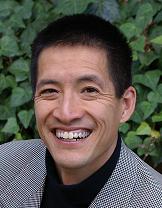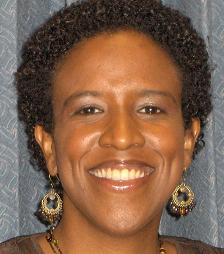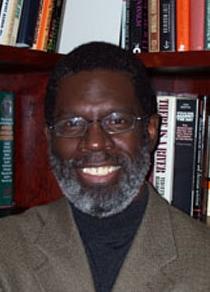| Conversations |
![PDF-NOTE: Internet Explorer Users, right click the PDF Icon and choose [save target as] if you are experiencing problems with clicking.](http://rsnonline.org/templates/rsntemplate-smallmasthead/images/pdf_button.png) |
 |
|
Second, if “scriptures” are understood differently across cultures (here, mainly through Yan’s example of the word jing), is it desirable and/or feasible to push for some tentative parameters to understand what is and is not “scripture” (as I suggested before)? Perhaps those parameters and/or definitions have to be culturally specific rather than cross-cultural (in the sense of a set of parameters or definitions that can be applied across cultures)? Of course, one gets to another sticky question here: how does one define “culture”? Again, Yan’s point about the literati class making jing equivalent to civilization or culture shows that what one means by “culture” — like what one means by “scripture” — is itself a site of interpretive and sociopolitical struggles. There is no one shared Chinese understanding, because of, say, educational and socioeconomic differences. Or, to go back to Gundaker’s contribution, if and when one attempts to come up with certain culturally specific parameters or definitions of “scriptures,” one really cannot talk about a so-called Western understanding (again, because of different communities, including diasporic ones, within the so-called West). My point here is not to get us into “a paralysis of analysis,” but to underscore the importance of specificity in “teaching scriptures,” or what one means by “scriptures.” I find Yan’s comments about the importance that commentaries have over the jing a challenging one for me as one who teaches scriptures. As I said earlier, I found this to be true of most of my students: they often read what the textbooks have to say about the New Testament without reading the New Testament itself. I find that a disturbing problem. After reading Yan, I am wondering if the problem has more to do with me than my students. Is it possible that my discomfort with this phenomenon has to do with my own assumptions about “scriptures,” and how they may differ from the assumptions that my students have about “scriptures”? I would venture to say that, generally speaking, my students’ and my assumptions about the New Testament are indeed not the same. If we spell out our different assumptions, I would, however, also imagine that my students actually tend to have a much higher and more rigid view of the New Testament than I do. So we end up with this odd scenario: a teacher who does not actually have a high view of the New Testament finds it disturbing that people read about the New Testament rather than read the New Testament itself, while students who have a higher view of the New Testament are happy reading about the New Testament without reading the New Testament itself. Does “teaching scriptures” in my case — if I were to do so effectively — necessitate some attempts to make sense of and sort through all the factors and dynamics that are involved in this scenario, not the least of which would be the assumptions that students bring to the class about “scriptures”? In this vein, I find Aymer’s identification of her institutional context as well as her students’ communities rather helpful and significant. Her reference to how spirituals and a song by Kanye West are used “as scripture” also touched on both of the issues that I am struggling with above. The ambiguous “as scripture” may refer to: 1) The phenomenon of reading something else rather than “scripture” itself; and/or 2) The idea that “scripture” may have a broader meaning and reference. The significant question for me, then, is this: when students refer to the spirituals or West’s song “as scripture,” are they operating with the first, the second, or both of the meanings identified above? As readers, we may focus on textual effects separate from authorial intentions; as teachers, however, would we consider it important — to the extent that we could — to try to differentiate what we are dealing with here? Finally, I actually find Aymer’s teaching not as far from the ISS’s foci as she said. After all, she does seem to teach her students how to read not only the New Testament, but also how nonacademic readers are reading the New Testament. In my own teaching of the New Testament “as scriptures,” I have often tried to impress on my students that the New Testament is not the only resource that one may use to wrestle with the “big questions.” I have used, for example, contemporary novels in my New Testament classes. In using them, my point is less about how the novels may allude to the New Testament and more about suggesting that “scriptures” have no monopoly on making meanings, much like — if I may refer back to Yan at this point — jing cannot be equated with civilization or culture. Whatever “scripture” is, one thing seems to come across strongly from this conversation: “scriptures” and the interpretation of “scriptures” are infused with power. If so, it seems important to me to teach my students to attend also to other voices without implying that these other voices are undercover “scriptures.” Perhaps I am now back to Gundaker’s contribution: may one understand Lusane’s memorial as meaning-full without categorizing it as a form of “scripture” in disguise or in the process of emerging as “scripture”? Or does one have to equate meaning-full texts (again, literary or otherwise) as “scriptures”? And, what is the difference and implications between those two teaching positions?
Further, as I noted earlier, there is another level of world-interpretative “texts:” “texts” through which even the Bible is interpreted — texts that govern how the Bible is read and what it must say. I take as an example of this Kanye West’s Jesus Walks. My students report that this text...and texts like it...are used to understand Bible (rather than the reverse) by the youth in their churches. I am struck by the report on this song, that it is used in church to dismiss the youth to “Youth Church” and that the youth sing it on the way out of church; apparently, these youth (of an upper-middle-class African Methodist Episcopal church) thought Jesus Walks was in the Bible. Of course, this further complicates the question of culture by adding the layer of generation — which is palpable where I teach. I have, after all, students in my classroom who remember segregation sitting next to students for whom the death of Tupac Shakur is far more important than the death of Martin Luther King Jr. Thus not only do they scripturalize Bible differently, their “midrashic” or Talmudic (to borrow a term from the ancient world) lenses are very different one from the other. How do we understand these texts through which world they are read — including Bible? Is the Protestant canon still “scripture”? Are we dealing with a midrashic level that further pushes the question of what “scripture” is? Parallels can, I’m sure, be found in Yan’s and Gundaker’s work; and of course the ancient parallel is that of Talmud. So, then, are “Talmudic”-type “texts” “scripture”? And in being scripture, do they displace the importance of what we have come to think of as “scripture”? This, I think, gets back to Liew’s question: may one understand Lusane’s memorial as meaning-full without categorizing it as a form of “scripture” in disguise or in the process of emerging as “scripture”? Or does one have to equate meaning-full texts (again, literary or otherwise) as “scriptures”? And, what is the difference and implications between those two teaching positions? And what, then, is the implication for how/what we do/ought to teach?
Issues that may be raised and/or refined in light of this last round of conversation include:
First, I wonder if we have any sort of consensus regarding the concept of “scriptures” — in this case, whether it is possible, wise, feasible, to have discussion about such a phenomenon across cultures and societies. It seems to me that concern about “teaching” “scriptures” is also concern, heightened sensitivity — as you all have indicated — about context and the politics and types and levels of consciousness and different practices and orientations that define different contexts Teaching what? To whom? For what? Might not the focus on teaching force us to come to terms with the reality that what is being taught is less texts themselves — this is the issue for so many engaging theological/religious studies discourses in the “world religions”/major civilizational contexts. And to take into account any other material objects, as with the individuals and subcultures Gundaker is so creatively tuned in to. Or are we confronted with the nationalist “classics” or “icons” as may be the categorization elsewhere? And the reactions to such? Are we teaching (something about, the contents of, the shape of) some “thing”? Or is not that “scriptures” are something like a catchphrase for (and a veiling of) some other concern or problem? And what might that be? And why do we not name it, address it? Or is it necessarily beyond speech/language/scripts, so we are forced to play games with speech/language/scripts? And what might heightened consciousness about the reality of multiplicity of other such things — “scriptures”/“classics” — bring to bear upon our thinking? And that of students? Are we not confronted with an ethical situation here? Can the study of any “scripture” tradition go on without the challenge that there are others? And that there are differences as well as similarities aplenty? Where should we place the challenge to students — all students — about the scandal of multiplicity of scriptures/classics/icons? How should we challenge ourselves? What might it mean to teach “scriptures” (as the teaching of some other thing/problem, etc.) in one key (one tradition) or representation (only in terms of traditional scripts, as with Gundaker)? What might it mean to do that, but with consciousness of other traditions, types of scripts, practices, engagements, categorizations? To be sure, there are risks involved in thinking this way, orienting one’s teacherly self this way. There are those who would question the validity of (the very notion of) comparative scriptures. And there are those who would raise questions about the wisdom of the rather expansive and tensive understanding of “scriptures” so that it includes nontraditional “scripts” and no scripts at all. But I think we are at a point where we see too clearly what is being protected by such conservative positions. The challenge must be multidirectional: boomeranging back to ourselves, as teachers; toward students who think they want/need only the basics; toward the conservators/authorities of scriptures; and toward those who cannot see yet what is at stake in reading society and culture and power dynamics through problematizing these matters.
Second, while I absolutely agree that the category of “scriptures” needs to be explored and exploded (to include nontraditional scripts and nonliterary texts), I do not think that this exploration/explosion and teaching what may be called the “basics” of one’s scriptural traditions are mutually exclusive. Just as it would be wrong, in my view, to spend one class session on a Hindu or Confucian text and think that one knows the scriptures of Hinduism and Confucianism, it will be equally wrong for me, as a teacher of the New Testament, not to confront my students with what is and what is not actually in the New Testament. It is one thing if students make a decision consciously or even half-consciously to subvert or displace the New Testament by inventing or improvising on the texts (I have no problem scripts, so we are forced to play games with speech/language/scripts? And what might heightened consciousness about the reality of multiplicity of other such things — “scriptures”/“classics” — bring to bear upon our thinking? And that of students? Are we not confronted with an ethical situation here? Can the study of any “scripture” tradition go on without the challenge that there are others? And that there are differences as well as similarities aplenty? Where should we place the challenge to students — all students — about the scandal of multiplicity of scriptures/classics/icons? How should we challenge ourselves? What might it mean to teach “scriptures” (as the teaching of some other thing/problem, etc.) in one key (one tradition) or representation (only in terms of traditional scripts, as with that at all); the greater problem — at least in many Protestant seminary contexts — is that students think they know the New Testament texts when they actually seldom or never read them. My insistence on confronting students with the New Testament texts is therefore not out of a conservative position, but out of a desire for students to really think about and think through what they need to do with the “scriptures” of their traditions, and they cannot do this responsibly without knowing what is there and not there in those scriptures. So in “teaching scriptures,” there are two types of courses that I would now like to develop in my context. Again, these two are not mutually exclusive; they leak into one another (both will involve in various degrees the recognition of other scriptural traditions and other contributions to human imagination and struggles) but they do have distinguishable focus. One will focus on exploring and exploding what one means by “scriptures,” the other will focus on engaging particular scriptures with “one’s own world” (particularly on issues of race/ethnicity, gender, class, sexuality, and so on). In my own case, I think I have done better on the latter than the former. The mission and work of ISS has helpfully pointed to the need — or my need — to develop a specific course that focuses on problematizing and investigating the category of “scriptures,” so that students as well as I will have more to say about this category of “scriptures” than a vague and evasive “however defined.”
Rather than being the specific field for which I was “trained” in the academy, the latter coalesced recursively from the people, practices, and material/visual forms that reshaped my orientation to research and teaching during fieldwork, and gained strength over and against an academic climate during my graduate school days that marginalized — and continues to marginalize — vernacular epistemologies through “explanations” (that explain them away) in terms of “big T” theories of meaning, politics, and economy. Although I had no good (academic) vocabulary at the time for articulating the mismatch between most of these grand Theories and life as lived, practices as practiced on the ground, I came away from three years of field discussions with diverse African Americans on their home ground with the simple conviction that they were smarter (critically aware of the workings of the world and how to deal with them), wiser (better equipped to follow through on the implications of values and consequences), and more generous (tolerant of human failing, willing to share expertise) than most of the academics to whom my work was answerable as a graduate student. Herve Varenne recently defined “education” as “conscious processes of deliberate change.” Though rarely spoken aloud as such, the shared aim of my foundational teachers was, and remains, to make a better, more just world, and to show others what such a world could look like, from the uniquely informed perspective of African descendants distant no more than two to three generations from enslavement, and distant not at all from personal experience with segregation, violence, and marginalization. How, then, does a generous, wise, and smart person “educate” an outsider like me? With what aims? And with what “instructional materials”? Therein should be some clues about what I should also teach. Partly because of self-selection — I was not, after all doing research in schools — the experts I met preferred indirection and open-ended approaches. Many “instructed” through writing and visual/material signs on their property. Some also used proverbs, biblical quotations, and body movements — like cutting the eyes with a sharp, up-tilt of the chin. When spoken, the terms of expression, the means, and the verbal summations/translations of visual/material signs were in terms of scripture, specifically Protestant and Catholic. But to focus narrowly only on deployment of biblical passages and related proverbs would be as distorting as reducing all to Marxian political economy or any other “big T” theory (from this perspective the term “scripture” seems to carry forward as much baggage as any other Big Meta frame — generative of a priori explanations over and against localized, grounded ones). In any case, “Diaspora knowledge systems” or “vernacular epistemologies,” became cover terms for the foundations of smartness and wisdom. And these foundations became the most worthwhile things my many educational opportunities yielded to teach about. In order to be respectful of the diverse historical and cultural currents that shape these foundations in the present day, it is important to recognize and turn students’ attentions to what Toni Morrison called “discredited knowledges” as well as institutionally sanctioned ones. The Christian Bible and schooled Roman alphabetic (as well as at times Hebrew, Arabic, and Greek) literacies fall into the second category. The former includes but is not limited to numerous cosmologies and practices that captives and immigrants brought with them to the Americas from West and Central Africa: vernacular and esoteric Islam, Yoruba Orisha traditions, Kongo cosmology, perspectives on the interactions of matter and spirit from Guinea Coast, and Bight of Biafra groups, and much more — limited only it seems by my ignorance. All of these, in turn, have generated representational/communicative repertoires that could/should figure within a broad definition of “scripture,” but at the same time are emblematic of precisely that “backwardness” by which, in the terminology of Michel de Certeau, the “Western scriptural economy” defines itself. However, as my colleague Michael Blakey has graciously reminded me when we have taught together in graduate seminars, it is very misleading to rest with this distinction because, while it reveals knowledge that have been “othered” and excluded, it also erases the contributions of people of color within, and to the schooled, the sanctioned, the “Western,” etc. Given where I am positioned in the academy, it is tempting to argue that all students need courses that pose these challenges and that all faculty need to lead the charge, not to this specific Diasporic content, but to whatever kind of “coloring outside the lines” helps to illuminate critically the institutional structures of which we are parts and the forms of knowledge that these structures systematically obscure. But that’s not only arrogant: it ignores some important “messages” built into the priority my teachers placed on indirection.
The list could go on but I’ll stop here. What has all this to do with teaching scriptures? A few closing thoughts. Yes, the term “scripture” is problematic. It can mask; it can reveal. For myself, it’s sufficient to take the ISS’s name as a ZPD with all the contradictions that “scripture” opens up, and all the potentials for indirection that go with the vernacular practice “signifying.” Its complex ramifications let it shape-shift, like water, meeting learners with all sorts of assumptions where they’re at, but with lots of leaks and tendrils to work on “deliberate change.” For me, at the start of these discussions, the word “scripture” was still too closely tied for comfort to the canonical texts of religions of the book inscribed in “major” writing systems. But these discussions have helped to undermine that too-hasty judgment. My colleagues have reminded me that these scriptures are both doctrinal and generative, both the bounded word of God and repositories of the means to make their own closure permeable and their situatedness apparent. The “how” of getting that across necessarily varies among us, but we do all seem to share the will to do so.
That these texts are addressing some unique set of concerns is not the essence of their scripturality for my students, as far as I can discern. For my students, at least, these texts — often within a very particular translation, mark you — are incantational (this, perhaps, to Gundaker’s colleague’s comment that in fact African Americans have also acted upon, and made meaning upon, the schooled Roman signs). They — in their cadences and phrases — invoke into being (an)other world. Indeed, certain cadences have become so powerful as to require very little more than the correct intonation, physical posture, movement, and so on (which of course is practiced in the halls and at the evening services on campus) to invoke that “other world.” When I, like Liew, point out what is — and what is not — in these texts, I find that I become to some extent complicit in aiding these contemporary conjurers; for in so doing, I am helping them refine their incantations, gain secret power and/or knowledge with which to confront the world. And the texts are so varied and multivocal that there are not enough hours in an MDiv curriculum to attempt to demystify them; and given their ultimate use, I’m not sure demystification is even entirely possible or desirable (any more than it would be for Yoruban-based “scriptures”). What I found worked — perhaps for the very first time this semester — was to point to the magic itself, the conjuration (thus Thee Smith) of which Christian texts are but one tool, the de/re/formulative (Wimbush) impulses not at all subtly behind the use of these texts in particular contexts. In my advanced class, the question of “what is being conjured here” or “for what reason are these texts being invoked” did more to bring to consciousness the “scripturality” of these texts (and by extension of other “texts” [Kanye West, Alvin Ailey]) than anything I have ever done in intro or in exegesis. But of course, they already have intro and exegesis; I’m not sure that first-semester students would be even open to the question. Also to Gundaker’s points is the matter of the limits of a seminary education. For, in fact, seminary education is finally the preparation of students to be conjurers, to conjure with (and sometimes against) “scriptures” — written, spoken, and unspoken. My advanced class — as it looked seriously at why and how others conjure — took on the feel of a cabal, co-conspirators undermining the power of those “in charge” and how they use “scripture” while playing with our own dangerous gnosis; not surprisingly, much of the class was in the younger cohort. With all of that gnosis, I’m not sure any of them is changed in how they consider “scripture” or (for that matter) in how they conjure. And yet, many asserted that such a class should be a requirement at seminary.
|






